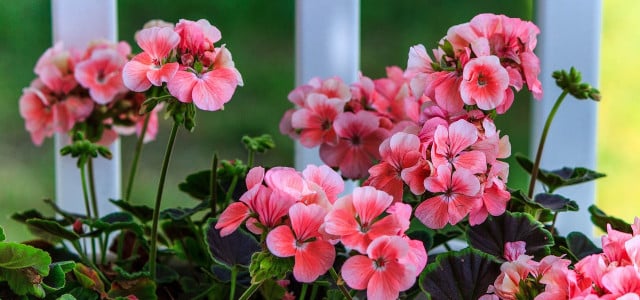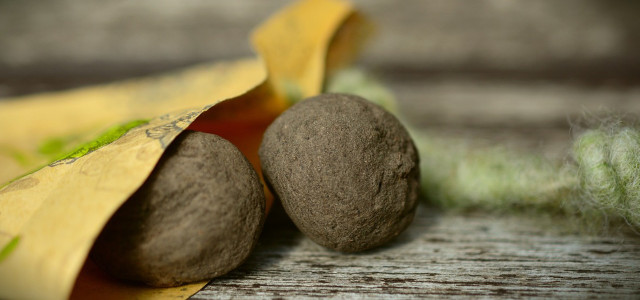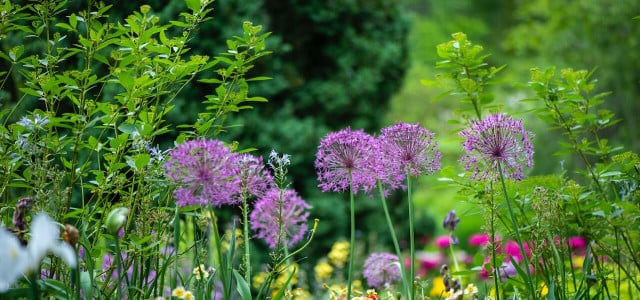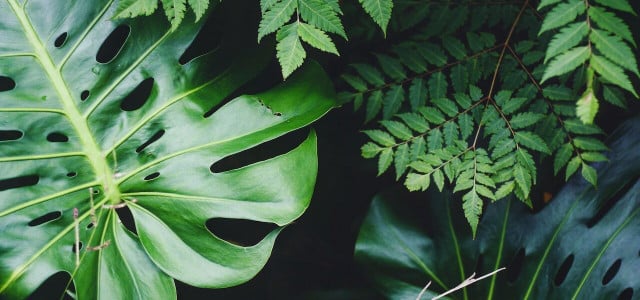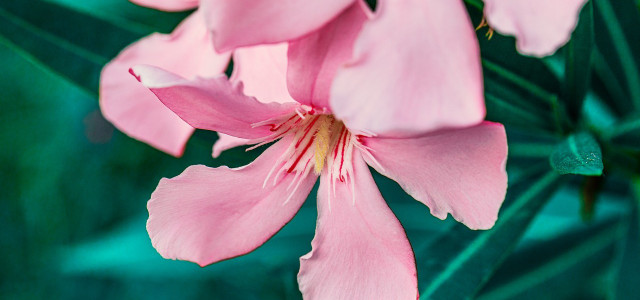Learn how to deadhead geraniums with our simple guide and find out more about one of our favorite flower bombs. You might be surprised by how easy it is to deadhead and grow them.
Learning how to deadhead geraniums won’t take you long. You can even deadhead these flowers with your nails when you know how. Deadheading simply involves the removal of wilted or dead flowers from geraniums to encourage and make room for more.
The practice of removing spent blooms isn’t confined to just geraniums. Many flowering plants require deadheading to encourage flowers to flourish. Check out our articles for more guidance:
- how to deadhead roses
- how to deadhead petunias
- how to deadhead daisies
- how to deadhead hydrangeas
- how to deadhead dahlias
To deadhead geraniums, you will need:
- Gardening gloves (optional)
- Clean, sharp hand shears (scissors or even your nails will suffice for most varieties if you do not have shears)
- A bucket/basket/paper bag to collect dead heads
Types of Geraniums
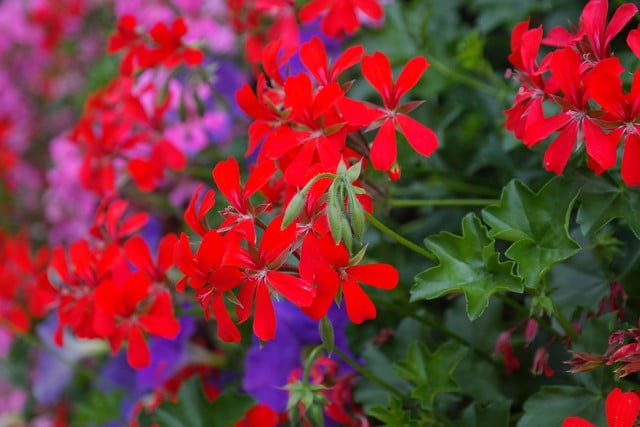
Geraniums thrive in a soil that is not too rich and is watered sparingly. They are low maintenance — which adds to their appeal. Deadheading geraniums is one of the most important steps in maintaining a floral beauty. Like most plants, there are natural varieties and man-manipulated cultivated varieties of geraniums.
There are around 300 species in the wild geranium — or Cranesbill — family. These naturally occurring geraniums were originally native to subtropical southern Africa. They are now found in moist, temperate climates across North America, Europe, and Africa. This wild geranium is also grown as an ornamental garden plant. Wild geraniums are identifiable by five very similar petals and long, thin seed pods — that earned them their “crane’s bill” name.
Cultivated or man-manipulated geraniums are highly bred forms of the genus Pelargonium. These geraniums come in a huge range of types. Some have scented petals, others are patterned, most are bright and very attractive. They can generally be classified into:
- Zonal or bedding geraniums often grown as annuals but may over-winter. Zonal geraniums are named for the zone of darker color on the leaf and flowers grow in clusters on top of a succulent stem.
- The ivy-leaved geranium droops like ivy when grown in a pot.
- The show geranium has large pansy-like flowers with just a few floral heads in each cluster.
- Aromatic geraniums have scented leaves and are used for essential oils.
How to Deadhead Geraniums
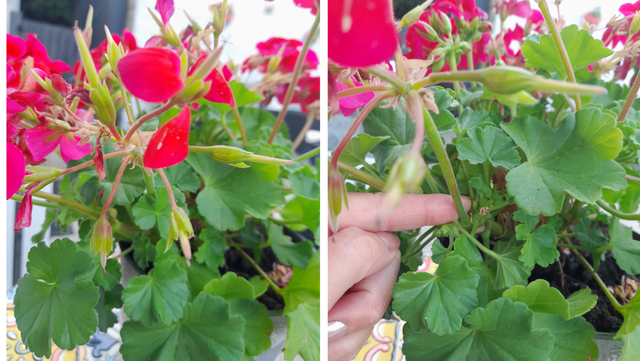


Essentially, there are four steps to deadheading geraniums — regardless of variety:
- Identify flowers with wilting or dead petals.
- Find where the stem of the deadhead or deadhead cluster meets the main stem — which is usually just above a leaf.
- Snip the deadhead at this point. (Cutting off the whole stem of the deadhead allows the plant to put energy into making new flowers instead of keeping the remaining plant tissue alive.)
- Gather your deadheads and add them to hot or cold composting piles (or keep reading for some ideas).
Note: If only a few of the flowers in a cluster of geraniums are wilting, snip off the individual deadhead. If the majority of the cluster is wilting, cut the entire stem.
How Does Deadheading Geraniums Work?
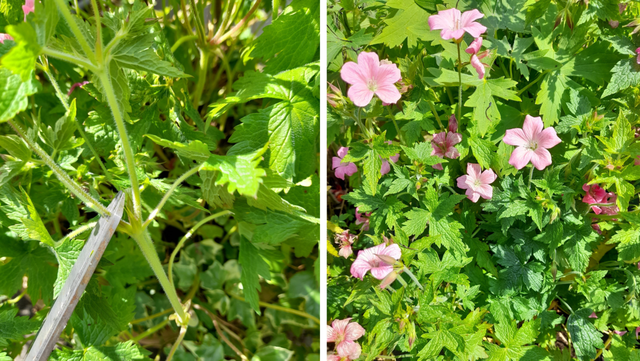


Flowering bushes and shrubs are programmed to reproduce. So are your geraniums and they do so by flowering. Their vibrant colors attract pollinators for pollination — which is necessary for fertilization and seed production to occur. So, if you deadhead your roses — they can’t reproduce and will keep flowering and flowering in a bid to so.
If you don’t deadhead your geraniums and the plant is fertilized — they will form seed pods and flowering will slow or cease completely (because the plant diverts its energy into the seeds as they mature).
Just getting into gardening? Read our guides on how to start a garden from scratch and how to realize urban gardening this summer.
When Should I Start and Stop Deadheading Geraniums?
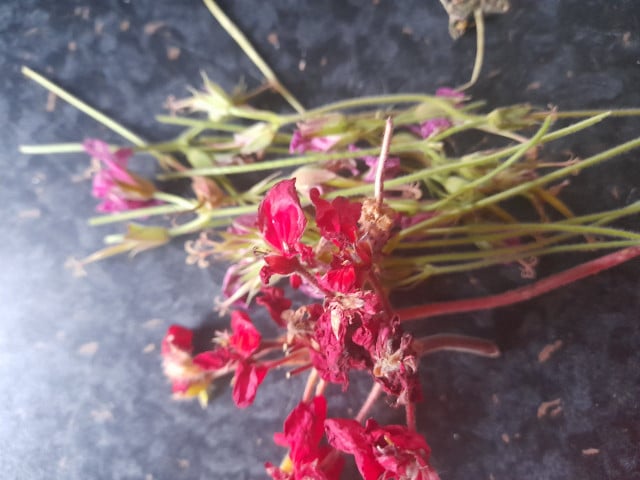


Start deadheading geraniums at the first signs of drooping and wilting on petals. Feed them some homemade fertilizer every two weeks as well as deadheading for optimal results. As a general guide, leave flowers on around one third of the plant to keep its attractive appearance. Keep deadheading throughout summer until flowering naturally begins to slow.
These plants can keep giving color and beauty right into fall if you deadhead at least once a week. You can even enjoy their foliage and flowers in winter if you bring them inside for the festive and frozen period. That’s why they are just one of many sun-loving plants to add to your garden.
Are Geraniums Environmentally Friendly?
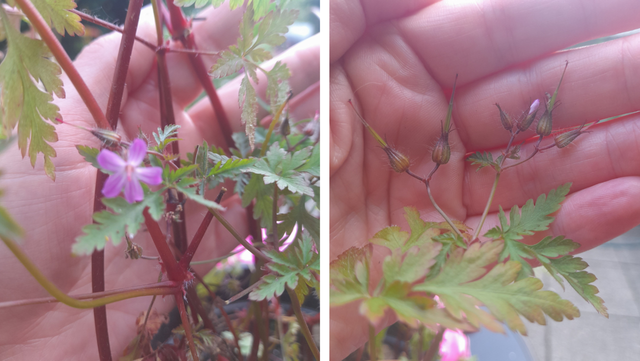


Geraniums originated in South Africa and the garden variety is said to have come to North America in 1786. Many types are now widely grown across the US because these plants can adapt to a range of conditions and climates. The adaptability of one species in particular — the “shiny geranium” (also called shining geranium or shining cranesbill) — has seen it upgraded to an invasive noxious weed in some regions — like California and Washington.
The shiny geranium is identifiable by its dainty pink flowers and rustic red stems. It is not the worst invasive species in the US — but can cause problems and spread virulently. The USDA has determined that the shiny geranium has the potential to become a major invader because of its:
- prolific seed set of between 60 and 730 per plant
- seed viability or around 100 percent for up to two years
- seed dispersal of up to 20 feet from the parent plant
It is highly important that you do not deadhead or encourage the shiny geranium to flourish. It can quickly spread and overwhelm other plants and habitats. The shiny geranium is on the Washington quarantine list — which means it is prohibited to transport, buy, sell, offer for sale, or to distribute plants or plant parts or seeds into or within the state of Washington.
It isn’t all bad news for geraniums generally, though. Native and other geranium species have many benefits to offer ecosystems across the US. They are a favorite dinner venue for many pollinators and creatures. Their nectar makes them attractive flowers for bees — such as bumblebees, mason bees, halictid bees, andrenid bees, nomadine cuckoo bees, miner bees, and others. They also attract a variety of fly species, small butterflies, and skippers. The plants also provide food for caterpillars, chipmunks and even deer.
Geraniums seem to particularly benefit urban settings, where the urban heat island effect is demanding more plants. They have also been found by researchers to supply urban pollinators with a high quality food source during spring and early summer — when other food sources are not yet abundant.
Recommended read: The 3 Types of Biodiversity Explained
Don’t Deadhead, Breed Instead



Consumerism is a leading driver of human-caused environmental destruction. Because many varieties of geranium are not frost hardy, many people let them die and just buy new plants every year — many of which are grown in energy-, water- and light-intensive greenhouses and plastic containers. To reduce your carbon footprint — don’t deadhead geraniums as the season draws to a close and allow them to form seeds for sowing next year instead.
Let the last bursts of flowers progress to seed pods. Watch the petals fall off naturally — then keep an eye on the seed pods regularly as they turn from a bright green to a brownish-yellow color. When they show signs of being fully dry and mature, you will see natural cracks developing in the pods as the seeds begin to emerge.
Cut the seed pods off carefully and let them fall into a paper bag or any dry container. The seeds will naturally spill out of the dry, mature seed pod. Store them in a cool, dry place until late winter/ early spring.
Check out our article on starting seeds in egg cartons: from seed to transplant for a complete and sustainable guide to sowing seeds with zero plastic. Plant your seeds inside 6–8 weeks before all risk of frost will pass in your area. They will need heat and moisture to germinate — so just sprinkle them on top of some compost and cover with a light sprinkle of compost or vermiculite. Keep the compost moist as the seeds germinate and develop into seedlings.
Summer is wasp season! Did you know that geraniums are a natural way to keep wasps away? Learn about the different types of wasps you need to look out for this summer, and learn how to get a wasp out of your house safely to be prepared.
Read more:
- How to Make Your Cut Flowers Last Longer: 9 Eco-Friendly Tips
- Can You Beat the 30 Plants a Week Challenge?
- Why Is My Plant Soil Moldy and How Do I Fix It?
Do you like this post?






